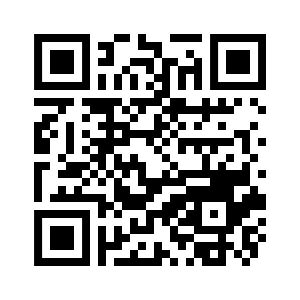Pengaruh Motivasi Kerja dan Lingkungan Kerja Terhadap Kinerja Karyawan Outsourcing Di Mediasi Employee engagement
DOI:
https://doi.org/10.33557/mbia.v20i3.1616Keywords:
motivasi kerja, lingkungan kerja, employee engagement, kinerja in roleAbstract
This study examines the mediating role of employee engagement on the effect of work motivation and work environment on in-role performance. Respondents in this study were employees of PT Trans Dana Profitri outsourcing, which is a company that provides labor services totaling 100 respondents. The sample was carried out by purposive sampling, the data was collected by means of a survey through a questionnaire using a Likert scale with a Structural Equation Modeling (SEM) approach using AMOS version 24, a significance level of 5% to analyze the data. The results showed that motivation had a positive effect on employee engagement = 0, 482, p 0.0001<0.13), Work Environment had a positive effect on employee engagement (β= 0.360 P <0.049), Employee engagement had a positive effect on performance in role ( = 0.455 P <0.0***), work motivation has a positive effect on in-role performance (β= 0549, P <0.002, work environment has a negative effect on in-role performance (β= -0, 133 P <0.365), The results of the employee engagement mediation test mediate the effect of the work environment on in-role performance as evidenced by the indirect effect value of 0.188 which is greater than the direct effect of -0.153, meaning that hypothesis 6 is proven, employee engagement does not mediate the effect of work motivation on in-role performance, which is indicated by the value indirect effect .241 is smaller than direct effect .604 means that hypothesis 7 is not proven.
Keywords: work motivation, work environment, employee engagement, performance in role
Abstrak
Penelitian ini menguji peran mediasi employee engagement pada pengaruh motivasikerja dan lingkungan kerja terhadap kinerja in role. Responden penelitian ini dilakukan pada karyawan outsourcing PT PT Trans Dana Profitri merupakan perusahaan yang menyediakan jasa tenaga kerja berjumlah 100 responden. Sampel dilakukan dengan purposive sampling, pengumpulan data dilakukan dengan survey melalui kuesioner menggunakan skala Likert dengan pendekatan metode Structural Equation Modelling (SEM) menggunakan AMOS versi 24, tingkat signifikansi 5 % untuk menganalisis data. Hasil penelitian menunjukkan motivasi berpengaruh positif terhadap employee engagement β= 0, 482, p 0,0001<0,13), Lingkungan Kerja berpengaruh positif terhadap employee engagement (β= 0,360 P <0,049), Employee engagement berpengaruh positif terhadap kinerja in role (β= 0,455 P <0,0***), Motivasi Kerja berpengaruh positif terhadap kinerja in role (β= 0549, P <0,002, Lingkungan Kerja berpengaruh negatif terhadap Kinerja in role (β= -0, 133 P <0,365), Hasil uji mediasi employee engagement memediasi pengaruh lingkungan kerja terhadap kinerja in role dibuktikan dengan nilai pengaruh tidak langsung 0,188 lebih besar dari pada pengaruh langsung -0,153, berarti hipotesis 6 terbukti, employee engagement tidak memediasi pengaruh motivasi kerja terhadap kinerja in role, yang ditunjukkan dengan nilai pengaruh tidak langsung ,241 lebih kecil dari pada pengaruh langsung ,604 berarti hipotesis 7 tidak terbukti.
Kata kunci: motivasi kerja, lingkungan kerja, employee engagement, kinerja in role
References
Anita. J (2014). Determinants of Employee Engagement and Their Impact on Employee Performance. Emerald Group Publishing Limited, 63, 308-323. doi:10.1108/IJPPM-01-2013-0008
Bakker, A. B. (2011). An evidence-based model of work engagement. Current Directions in Psychological Science, 20, 265–269.
Biswas, Soumendu and Bhatnagar, Jyotsna (2013). Mediator Analysis of Employee Engagement: Role of perceived organizational support, P-O Fit, organizational commitment and job satisfaction. Vikalpa. Vol. 38, no.1, 27-40
Cendani, C., & Tjahjaningsih, E. (2016). Pengaruh Employee Engagement Dan Modal Sosial Terhadap Kinerja Karyawan Dengan OCB (Organizational Citizenship Behaviour) Sebagai Mediasi (Studi pada Bank Jateng Kantor Pusat). Media Ekonomi Dan Manajemen, 30(2), http://jurnal.untagsmg.ac.id/ index.php/fe/article/.
Christian, M.S; Garza, A; Slaughter, Jerel E (2011). Work engagement: a quantitative review and test of its relations with task and contextual performance. Personnel Psychology , 64, 89–136
Ghozali, 2014. Aplikasi analisis Multivariate dengan Program SPSS. Badan Penerbit UNDIP , Semarang
Líbano, M. Del, Llorens, S., Salanova, M., & Schaufeli, W. B. (2012). About the Dark and Bright Sides of Self-efficacy: Workaholism and Work Engagement. The Spanish Journal of Psychology, 15(2), 688–701. https://doi.org/10.5209/rev_sjop.2012.v15.n2.38883
Kataria, Rastogi, Garg ( 2013). Organizational effectiveness as a function of employee engagement. Sout Asian Journal of Management, vol. 20. No.4
Markos and Sridevi (2010). Employee Engagement: the key to improving performance. International Journal of Business and Management. Vol.5 no. 12
Moeheriono. (2009). Pengukuran Kinerja Berbasis Kompetensi: Competency Based Human Resource Management. Jakarta: Ghalia Indonesia.
Priambada, Komang &Agus Eka Maharta, 2008, Outsourcing Versus Serikat Pekerja: An intruduction to Outsourcing, Jakarta: Alihdaya Publishing.
Rachmatullah, A., Susanty, A. I., & Partono, A. (2015). Pengaruh Motivasi Kerja Terhadap Employee Engagement: Studi Kasus di PT House The House Bandung. E-Proceeding of Management, 2(3), 2919–2927.
Rich, B. L., Lepine, J. A., & Crawford, E. R. (2010). Job engagement: Antecedents and effects on job performance. Academy of Management Journal, 53, 617-635.
Robinson, D., Perryman, S., & Hayday, S. (2004). The Drivers of Employee Engagement. North, 408, 12–15. http://www.managingpeople4profit.com/uploads/2/8/1/6/2816853/www-employment-studies-co-uk_drivers_of_engagement.pdf
Saks, Alan. M (2006). Antecedents and consequences of employee engagement. Journal of Managerial Psychology. Vol.21 no.7. pp.600-619
Schaufeli, W. (2012). Work engagement. What do we know and where do we go? Romanian Journal of Applied Psychology, 14(1), 3–10.
Schaufeli, W. B., Taris, T. W., & Van Rhenen, W. (2008). Workaholism, burnout, and work engagement: Three of a kind or three different kinds of employee well-being? Applied Psychology, 57(2), 173–203. https://doi.org/10.1111/j.1464-0597.2007.00285.x
Schaufeli, W., Salanova, M., González-romá, V., & Bakker, A. (2002). The Measurement of Engagement and Burnout: A Two Sample Confirmatory Factor Analytic Approach. Journal of Happiness Studies, 3(1), 71–92. https://doi.org/10.1023/A:1015630930326
Sedarmayanti. (2009) . SumberDaya Manusia dan Produktivitas Kerja. Bandung:MandarMaju
Sonnentag, A., Volmer, J., Spychala (2010). Job Performance. Sage Handbook Organizational Behavior. vol.1/ed. by Julian Barling, Los Angeles, Calif. (u.a) 427-44
Sutrisno, Edy. (2009). Manajemen Sumber Daya Manusia. Jakarta: Kencana Pranada Media Group
Wei, Y. C., Han, T. S., & Hsu, I. C. (2010). High-performance HR practices and OCB: A cross-level investigation of a causal path. International Journal of Human Resource Management, 21(10), 1631–1648. https://doi.org/10.1080/09585192.2010.500487
Williams, Larry, J., & Anderson, Stella, E. (1991). Job Satisfaction and Organization Commitment as Predictors of Organizational Citizenship and In-Role Behaviors. Journal of Management, 17(3), 601–617
Downloads
Published
Issue
Section
License
MBIA Universitas Bina Darma Jalan Jend. A. Yani 13 Ulu Palembang 
MBIA by http://journal.binadarma.ac.id/index.php/mbia is licensed under a Creative Commons Attribution-ShareAlike 4.0 International License.











